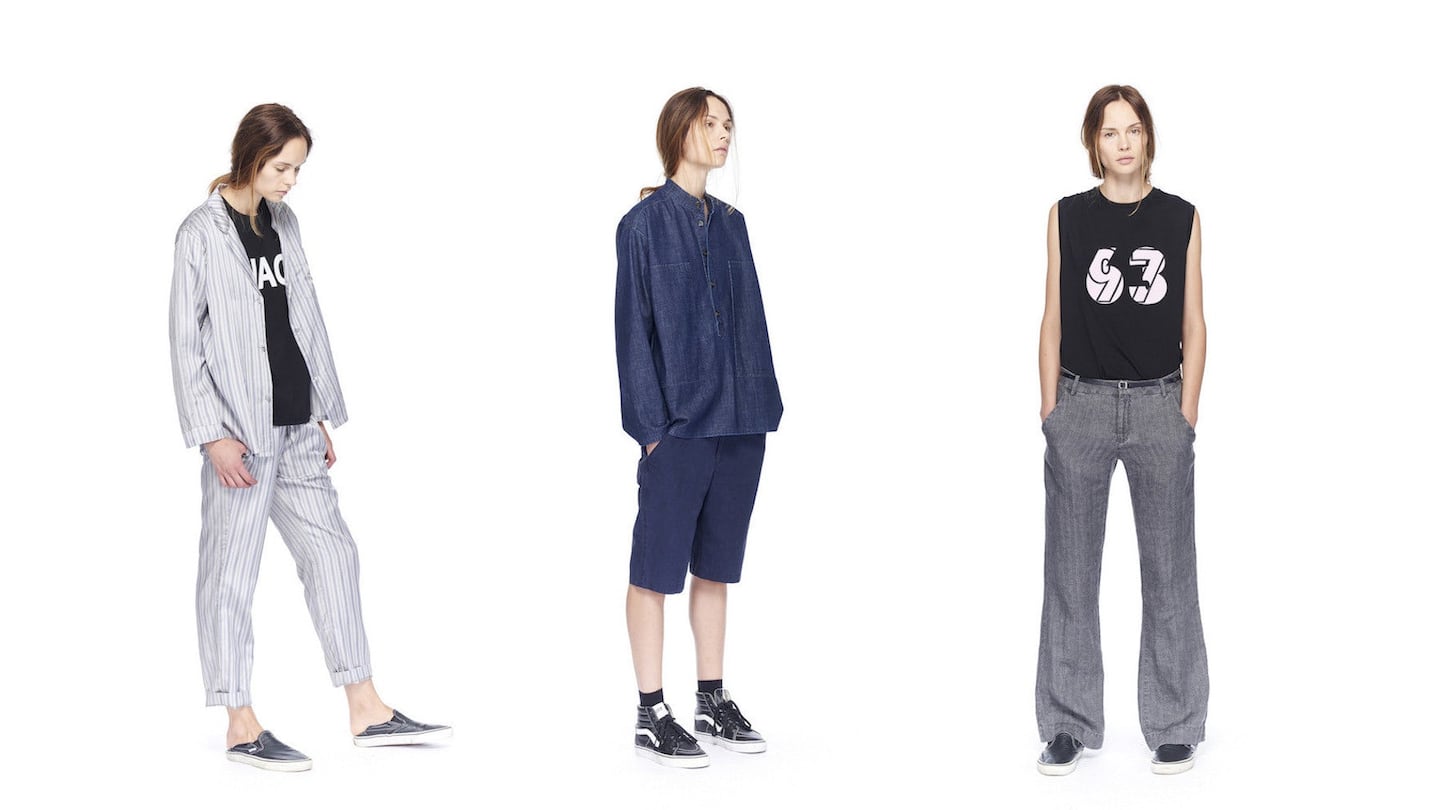
The Business of Fashion
Agenda-setting intelligence, analysis and advice for the global fashion community.

Agenda-setting intelligence, analysis and advice for the global fashion community.

Welcome to News Bites, BoF's regular feature of the stories that have got the industry talking.
The News showroom founder Stella Ishii is trying her hand at direct-to-consumer.
When Stella Ishii, founder of New York showroom The News, launched her 6397 label, her intentions were to fill a niche for elevated basics and conceive a brand reflective of her own voice. In four years, it has garnered stockists including Barneys New York and La Garconne. Yet, despite its existing online presence, 6397 now has its own e-commerce platform.
For Ishii, the e-commerce site provides not only a monetisation but also communication channel with her consumers. ‘Next to opening a brick-and-mortar store, [e-commerce] gives us an opportunity to build a 6397 world in a way that our wholesale customers wouldn’t,” she says.
ADVERTISEMENT
While e-commerce is nothing new, what is interesting about 6397’s site is the seemingly contradicting approach to that of its mother company, The News. While the showroom is dependent upon wholesale thriving, 6397’s approach is increasingly direct-to-consumer.
Nevertheless, for Lasse Karlsson, Ishii’s business partner, the contradiction is merely superficial. E-commerce is not intended to replace wholesale. On the contrary, the two channels are proposed to work synergistically with each other: the e-commerce site is intended to help build a stronger brand identity – to the benefit of wholesale partners.
“The old way to do it would be to have traditional marketing to support the brand for the brick-and-mortar stores, so they can get to sell the brand in a better way. I think this is pretty much the same thing,” says Karlsson.
Though a 6397 brick-and-mortar boutique may be a less effective way of reaching consumers, Karlsson does not rule out a physical presence in future. "I am not sure exactly what will be the next step for us: it could be specific shop-in-shops or pop-ups. I think that could be interesting. We'd have to find the right location," he says. — Edwin Jiang
Séverine Merle is to succeed Marco Gobbetti as CEO of Céline.
Merle is only the third female CEO in the history of LVMH, where she has held posts at Kenzo, Louis Vuitton and most recently, Berluti. She is described by LVMH chairman and CEO Pierre-Yves Roussel as a good fit with the culture of the brand.
Since Gobbetti's departure in January, CEO responsibilities at Céline have been managed by Roussel himself. Among his goals for Céline are e-commerce, as well as expanded footwear and fine jewellery collections.
Gobbetti announced that he would be leaving the French fashion house in July 2016 to assume the CEO role at Burberry, a position that had previously been held by Christopher Bailey in addition to his responsibilities as chief creative officer. Gobbetti started work at Burberry on January 27 as executive chairman, Asia Pacific and Middle East, and will join the board, taking the top job on July 5 2017.
ADVERTISEMENT
Merle's successor at Berluti is yet to be announced. — Tamara Abraham
Giorgio Armani is joining a host of other fashion brands in consolidating his collections.
The designer is to fold his Collezioni and Jeans brands, and instead incorporate them into the three remaining lines: Giorgio Armani, Emporio Armani and Armani Exchange.
The decision could prove to be an astute one. Dolce & Gabbana has achieved positive results by closing D&G, while Burberry executives are said to be "pleased" by the results of consolidating its Prorsum, London and Brit collections. The closure of Marc Jacobs' Marc by Marc Jacobs, however, is yet to prove worthwhile and Prada's Miu Miu is a case study for how more accessible sister labels can develop an identity of their own.
Mario Ortelli, head luxury goods analyst at global asset management firm Sanford C. Bernstein, explained the wave of brand consolidation in a recent BoF article. "In the 1990s, distribution was more weighted on wholesale than retail. You needed different lines that lived under an umbrella brand," he said. "The market is now driven more by direct retail than wholesale, and the companies that have suffered the most are the ones with the most diversified brands."
For Armani, the decision comes at a time of internal restructuring within the organisation. The new streamlined series of collections will avoid confusion, the designer said. — Tamara Abraham
Do you have a story for News Bites? Email newsbites@businessoffashion.com.
Antitrust enforcers said Tapestry’s acquisition of Capri would raise prices on handbags and accessories in the affordable luxury sector, harming consumers.
As a push to maximise sales of its popular Samba model starts to weigh on its desirability, the German sportswear giant is betting on other retro sneaker styles to tap surging demand for the 1980s ‘Terrace’ look. But fashion cycles come and go, cautions Andrea Felsted.
The rental platform saw its stock soar last week after predicting it would hit a key profitability metric this year. A new marketing push and more robust inventory are the key to unlocking elusive growth, CEO Jenn Hyman tells BoF.
Nordstrom, Tod’s and L’Occitane are all pushing for privatisation. Ultimately, their fate will not be determined by whether they are under the scrutiny of public investors.